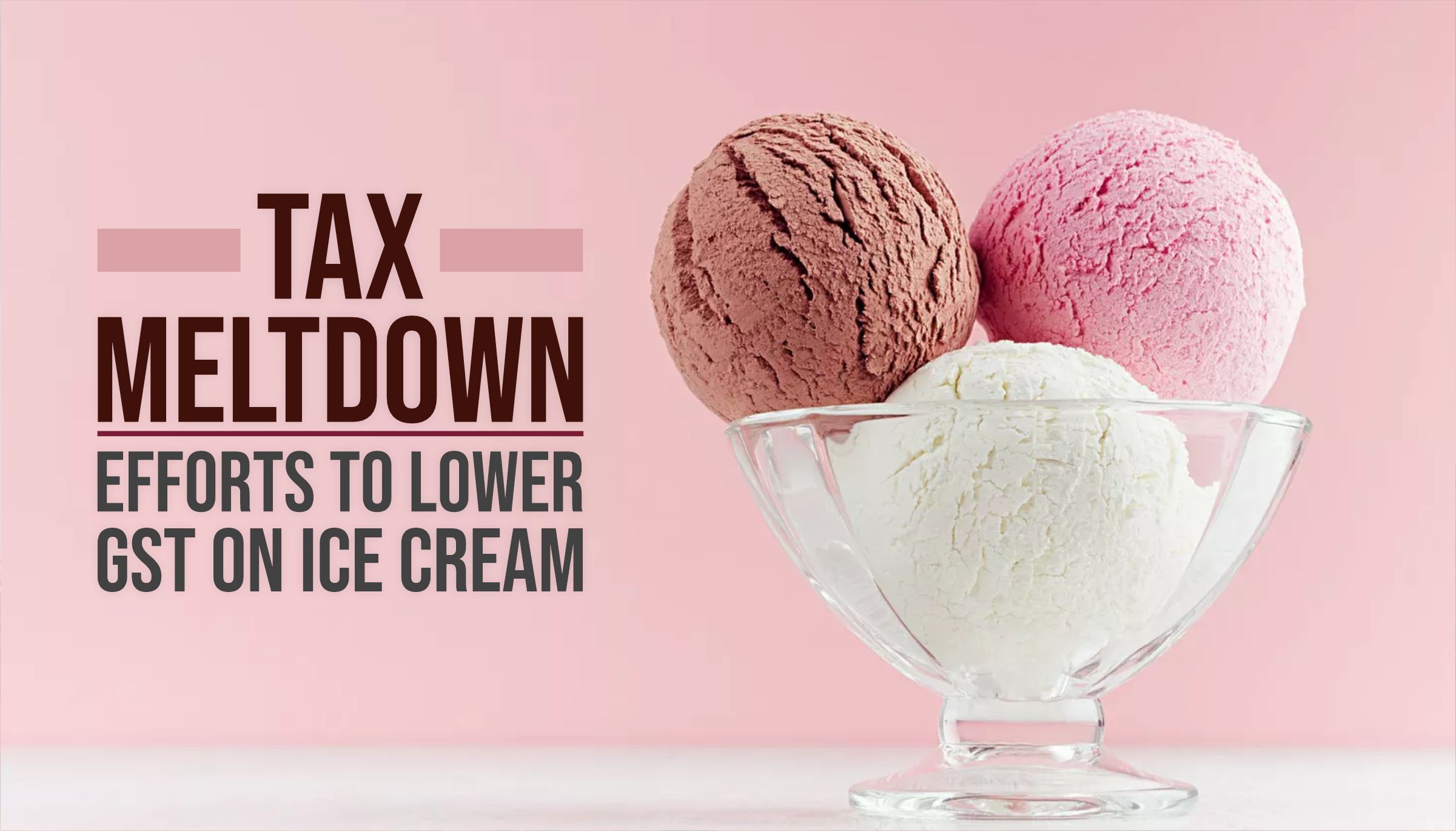Tax Meltdown: Efforts To Lower GST on Ice Cream

In a concerted effort to reduce the Goods and Services Tax (GST) on ice cream, industry representatives have approached the highest levels of government. This initiative, led by the Indian Ice-Cream Manufacturers’ Association (IICMA), aims to lower the GST rate from 18% to 5%, aligning it with other dairy products and potentially boosting consumption and economic benefits.
Representation to the Finance Ministry
The ice cream companies, through a well-strategized approach, have sought the intervention of the President, who has duly forwarded their representation to the Finance Ministry. The primary goal is to advocate for a reduced GST rate, which currently stands at 18% for ice cream sold via shops or parlours. However, when bundled with food supplies by hotels or restaurants, ice cream is considered part of the restaurant service and attracts a lower GST rate of 5%. The final decision on any rate reduction lies with the GST Council, expected to convene shortly after new government formations at the Centre and in various states.
Arguments for GST Reduction
The IICMA’s representation to the Finance Ministry highlights several key points:
- Increase in Demand and Consumption: The association argues that a reduction in GST to 5% would lower the product cost, thereby increasing the demand and consumption of ice cream among the Indian populace.
- Comparative Consumption Rates: The average Indian consumes only 400 millilitres of ice cream annually, starkly lower compared to 28.4 litres in New Zealand, 20.8 litres in the USA, and 18 litres in Australia.
- Dairy Product Classification: Ice cream is categorized as a dairy product. While milk attracts NIL GST and other dairy products like paneer, curd, lassi, yoghurt, and buttermilk have a 5% GST, ice cream is taxed at 18%, making it disproportionately expensive.
- Cost of Raw Materials: Most raw materials for ice cream are animal/agriculture-based and attract a lower GST rate of NIL or 5/12 percent, further justifying the need for a reduced rate on the finished product.
Impact on Unorganized Sector and Compliance
The association claims that around 40% of ice cream manufacturers operate in the unorganized sector. A GST reduction to 5% could incentivize these small, unorganized companies to enter the tax net, thereby improving compliance. Increased compliance would mean that more small players would be willing to adhere to the law and pay taxes, reducing tax evasion and increasing government tax collections.
Economic Benefits
According to the International Market Analysis Research and Consulting (IMARC) Group’s Report, the Indian ice cream market is expected to grow from Rs 16,500 crore in 2021 to over Rs 43,600 crore by 2027, with a compound annual growth rate (CAGR) of 17.69%. This growth will benefit farmers in rural areas, improving their living standards. The association also emphasizes the potential health benefits of ice cream and its positive impact on rural households through targeted marketing campaigns.
Employment and Industry Impact
The ice cream industry currently employs over 20 lakh people across various production segments. Additionally, more than 1.25 lakh vendors earn their livelihood by selling ice cream in strategic locations. The industry is a major consumer of sugar, directly impacting the livelihoods of nearly 50 million sugarcane farmers. The association underscores that the livelihoods of millions depend on a thriving ice cream industry.
The push to reduce GST on ice cream from 18% to 5% presents a compelling case for economic, consumer, and social benefits. By aligning the GST rate of ice cream with other dairy products, not only can the industry achieve significant growth, but it can also uplift the livelihoods of countless individuals involved in its production and distribution. The decision now rests with the GST Council, whose upcoming meeting could potentially usher in a transformative change for the ice cream industry in India.
